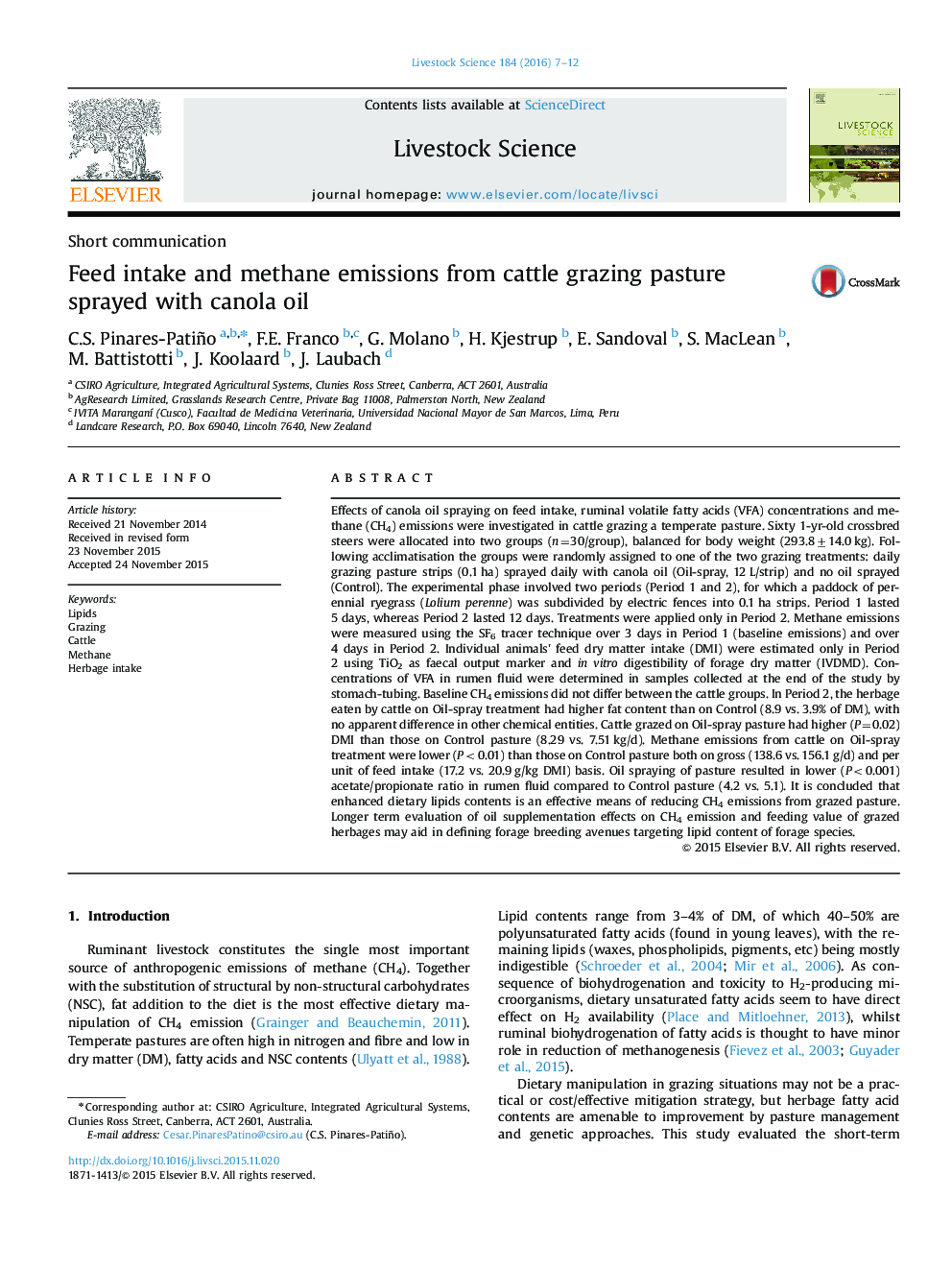| کد مقاله | کد نشریه | سال انتشار | مقاله انگلیسی | نسخه تمام متن |
|---|---|---|---|---|
| 2446985 | 1553948 | 2016 | 6 صفحه PDF | دانلود رایگان |
• Oil-spraying of pasture effectively increased the lipids intake by grazing cattle.
• Oil-spraying resulted in enhanced feed intake and decreased methane emission.
• Oil-spraying resulted in lowered acetate/propionate ratio in rumen fluid.
• Forages high in lipids may have environmental and productivity benefits.
Effects of canola oil spraying on feed intake, ruminal volatile fatty acids (VFA) concentrations and methane (CH4) emissions were investigated in cattle grazing a temperate pasture. Sixty 1-yr-old crossbred steers were allocated into two groups (n=30/group), balanced for body weight (293.8±14.0 kg). Following acclimatisation the groups were randomly assigned to one of the two grazing treatments: daily grazing pasture strips (0.1 ha) sprayed daily with canola oil (Oil-spray, 12 L/strip) and no oil sprayed (Control). The experimental phase involved two periods (Period 1 and 2), for which a paddock of perennial ryegrass (Lolium perenne) was subdivided by electric fences into 0.1 ha strips. Period 1 lasted 5 days, whereas Period 2 lasted 12 days. Treatments were applied only in Period 2. Methane emissions were measured using the SF6 tracer technique over 3 days in Period 1 (baseline emissions) and over 4 days in Period 2. Individual animals' feed dry matter intake (DMI) were estimated only in Period 2 using TiO2 as faecal output marker and in vitro digestibility of forage dry matter (IVDMD). Concentrations of VFA in rumen fluid were determined in samples collected at the end of the study by stomach-tubing. Baseline CH4 emissions did not differ between the cattle groups. In Period 2, the herbage eaten by cattle on Oil-spray treatment had higher fat content than on Control (8.9 vs. 3.9% of DM), with no apparent difference in other chemical entities. Cattle grazed on Oil-spray pasture had higher (P=0.02) DMI than those on Control pasture (8.29 vs. 7.51 kg/d). Methane emissions from cattle on Oil-spray treatment were lower (P<0.01) than those on Control pasture both on gross (138.6 vs. 156.1 g/d) and per unit of feed intake (17.2 vs. 20.9 g/kg DMI) basis. Oil spraying of pasture resulted in lower (P<0.001) acetate/propionate ratio in rumen fluid compared to Control pasture (4.2 vs. 5.1). It is concluded that enhanced dietary lipids contents is an effective means of reducing CH4 emissions from grazed pasture. Longer term evaluation of oil supplementation effects on CH4 emission and feeding value of grazed herbages may aid in defining forage breeding avenues targeting lipid content of forage species.
Journal: Livestock Science - Volume 184, February 2016, Pages 7–12
